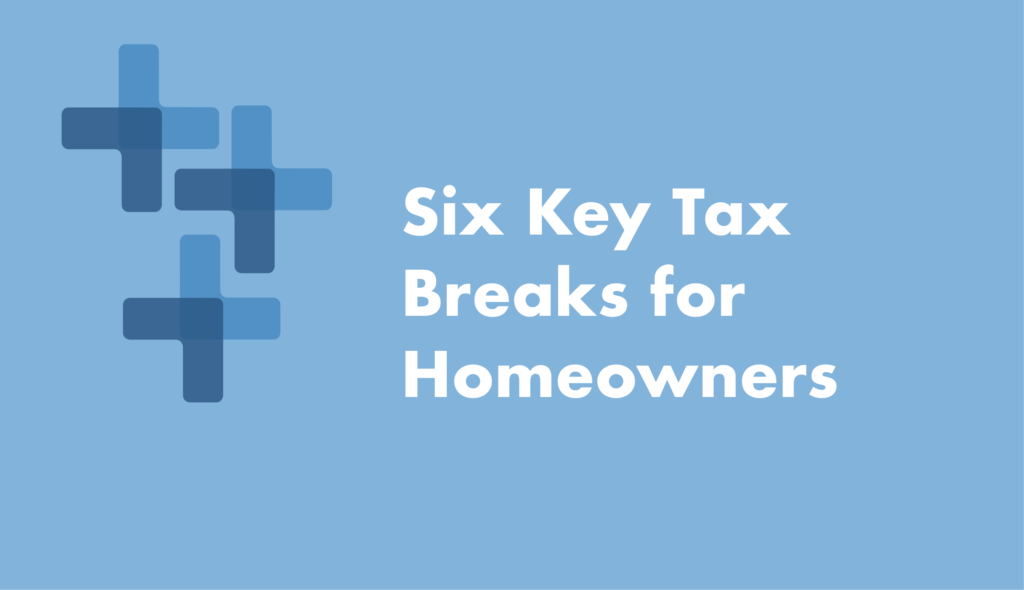The days of classic “tax shelters”— such as cattle breeding or oil drilling deals — are long gone. But at least one major tax shelter is still standing: Your home. If you own your principal residence, you can cash in on a bevy of tax breaks, saving thousands of tax dollars or even more. Here are six ways your home can provide tax shelter.

1. Home sale exclusion
Let’s begin with the biggest tax payoff for homeowners. If you sell a home you’ve owned and used as your principal residence for at least two of the five years prior to the sale, you can exclude from tax up to $250,000 of gain for single filers and $500,000 for joint filers.
Generally, any excess is taxable as long-term capital gain if you’ve owned the home for more than a year. The maximum long-term capital gain rate is 15% (20% for upper-income taxpayers).
A partial exclusion may be available if you’re selling the home due to:
- A change in employment;
- Health reasons; or
- Other unforeseen circumstances.
Note: A homeowner affected by COVID-19 may qualify for a partial exclusion.
2. Mortgage interest deductions
Generally, if you itemize deductions, you can write off mortgage interest paid during the year, subject to certain limits. Previously, the deduction was available for interest paid on the first $1 million of acquisition debt and $100,000 of home equity debt.
The Tax Cuts and Jobs Act (TCJA) has revised the rules for 2018 through 2025 as follows.
- The deduction threshold for acquisition debt is lowered to $750,000 (but deductions for debt incurred before December 16, 2017, are grandfathered).
- The deduction for home equity debt is generally suspended.
Note: If you take out a home equity debt and use the proceeds for a home improvement, it may qualify as an acquisition debt. As a result, you can deduct mortgage interest on the debt, up to the $750,000 threshold.
3. Property tax deductions
This tax break has been somewhat watered down by the TCJA. Previously, itemizers could generally deduct the full amount of their property taxes. However, for 2018 through 2025, the TCJA limits the deduction for state and local tax (SALT) payments, including property taxes, to $10,000 a year.
For example, if your SALT payments for 2020 include $25,000 in combined property taxes and state income taxes, you can deduct only $10,000. Nevertheless, this is still a valuable write-off to many taxpayers, especially those in states with no or a low state income tax.
Note: This tax break isn’t limited to property taxes on your principal residence. It may also be claimed for vacation homes and even undeveloped land.
4. Rental deductions
If you’re renting out a home, you’re entitled to deduct a generous depreciation allowance plus a proportionate amount of other rental expenses such as insurance, repairs, property taxes, mortgage interest, etc. These deductions can help offset tax on the rental income.
However, special rules apply to a vacation home that you personally use part of the time. If your personal use exceeds 14 days or 10% of the days that the home is rented out, you can’t claim a tax loss for the year. As the year winds down, keep an eye on this limit.
5. Home office deductions
Frequently, a self-employed individual will use a room in their home for business reasons, such as administrative work. In this case, the individual may be in line for home office deductions.
To qualify, you must use the office regularly and exclusively as your principal place of business or a place where you meet or deal with clients, patients or customers in the normal course of business. Assuming you satisfy this requirement, you can write the allocable portion of home expenses like utilities, insurance and repairs, plus the expenses directly attributable to the home office.
Note: Conversely, employees working remotely due to the COVID-19 crises generally can’t deduct home office expenses under the current rules.
6. Home office deductions
This last tax break for homeowners was reinstated by tax extender legislation — the Taxpayer Certainty and Disaster Tax Relief Act. Under the extender law, you can deduct mortgage insurance premiums paid in 2020, subject to a phase-out based your adjusted gross income (AGI). The phase-out begins at $100,000 of AGI and ends at $110,000 of AGI.



